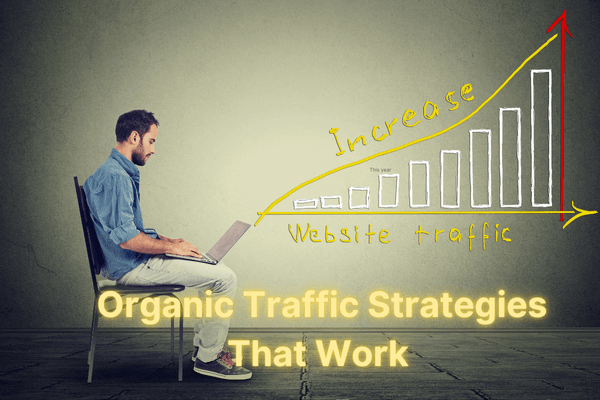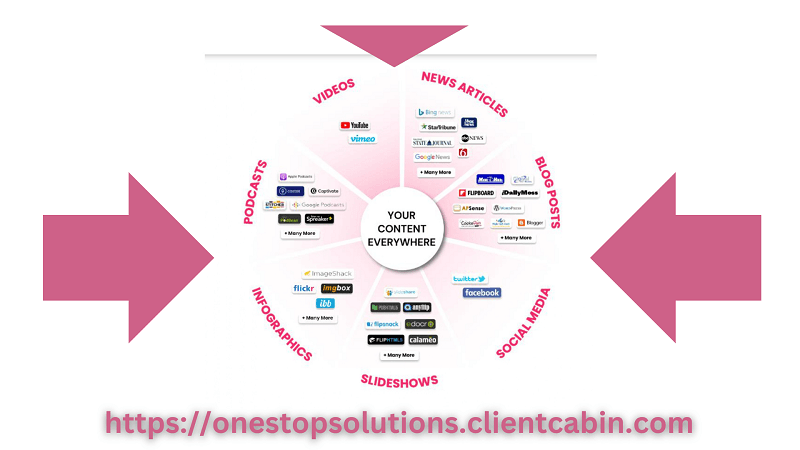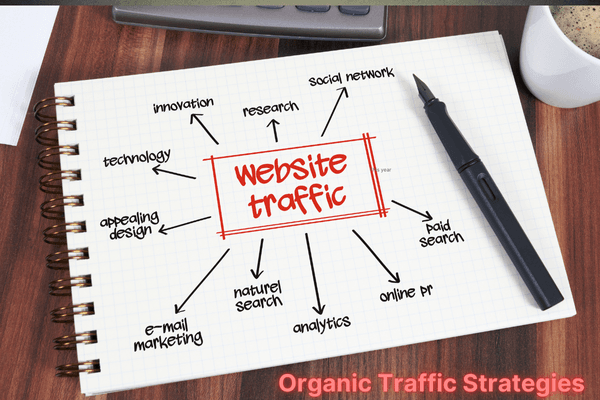How to Replace Paid Ads with Organic Traffic Strategies That Work
Shifting focus from paid ads to organic traffic strategies that work, undersores the fact that the battle for visibility is fierce in today’s digital landscape. While paid ads offer a quick fix, they can quickly drain your budget. Imagine spending $100 for just a handful of clicks! That’s why more marketers are turning their focus to organic traffic strategies. These approaches not only save money but also build long-term credibility and trust with your audience.
The Growing Challenge of Paid Advertising
Paid advertising can be an effective way to get immediate visibility, but it comes with its own set of challenges. For one, costs are continually rising. According to recent studies, the average cost-per-click (CPC) on Google Ads is between $1 and $2, but competitive industries can see CPCs go much higher. This makes it unsustainable for many businesses, especially small ones, to rely solely on paid ads for traffic.
Besides that, ad blockers are becoming more popular, which means fewer people are even seeing your ads. Users also tend to trust organic results more, as they perceive them as more credible. Therefore, it’s essential to focus on strategies that build organic traffic.
Benefits of Organic Traffic Over Paid Ads
Organic traffic offers several compelling advantages. First and foremost, it’s cost-effective. Once you establish a strong organic presence, you don’t have to pay for each click or impression. This can save you thousands of dollars annually.
Moreover, organic traffic is sustainable. Unlike paid ads, which stop working the moment you stop paying, organic strategies continue to drive traffic long after they’ve been implemented. This is because search engines, like Google, value quality content and user experience, rewarding websites that consistently deliver both.
Most importantly, organic traffic builds trust. Users often skip past ads and click on organic results because they see them as more reliable. This trust translates into higher conversion rates and better customer loyalty.
Maximizing SEO for Long-Term Traffic
Search Engine Optimization (SEO) is the backbone of any successful organic traffic strategy. By optimizing your website and content, you can improve your search engine rankings, making it easier for potential customers to find you.
Keyword Research and Optimization Techniques
One of the first steps in any SEO strategy is keyword research. This involves identifying the terms and phrases your target audience is searching for. Tools like Google Keyword Planner and SEMrush can help you find relevant keywords with high search volume and low competition.
Once you’ve identified your target keywords, it’s time to optimize your content. This means naturally incorporating these keywords into your website’s titles, headings, and body text. However, avoid keyword stuffing, as it can lead to penalties from search engines.
Optimizing On-Page Elements
On-page SEO involves optimizing individual pages to rank higher and earn more relevant traffic. Start by ensuring your title tags and meta descriptions are compelling and include your target keywords. These elements serve as your website’s first impression in search results, so make them count.
Next, focus on your site’s structure. A well-organized site makes it easier for search engines to crawl and index your content. Use internal linking to connect related pages and help users navigate your site more efficiently.
Building High-Quality Backlinks
Backlinks, or inbound links, are links from other websites to yours. They act as votes of confidence, signaling to search engines that your content is valuable and trustworthy. Aim to acquire backlinks from reputable sites within your industry.
One effective way to build backlinks is through guest blogging. By contributing high-quality content to other sites, you can include a link back to your own site. Additionally, consider reaching out to industry influencers and asking them to share your content.

Organic Traffic Strategies Based On Quality Content
Content is king in the world of SEO. By creating valuable, relevant content, you can attract and retain a clearly defined audience, ultimately driving profitable customer action.
The Power of Blogging for SEO
Blogging is one of the most effective ways to drive organic traffic. By regularly publishing informative and engaging blog posts, you can attract more visitors to your site. Additionally, blogs provide an opportunity to target long-tail keywords, which are typically less competitive but highly relevant to your audience.
For instance, instead of targeting a broad keyword like “fitness tips,” you could focus on a more specific phrase like “home workouts for beginners.” This approach not only improves your chances of ranking but also attracts users who are more likely to convert.
Leveraging Social Media for Traffic
Social media platforms are powerful tools for driving organic traffic to your website. They offer a unique opportunity to engage with your audience, build brand awareness, and drive traffic through shared content. Unlike paid ads, social media engagement is often more genuine and can lead to lasting relationships with your audience.
To effectively use social media for traffic, you need to understand your audience and the platforms they frequent. This allows you to tailor your content and engagement strategies to maximize reach and impact.
Building a Strong Social Presence
Building a strong social media presence begins with choosing the right platforms. Focus on those where your target audience is most active. Whether it’s Instagram, Facebook, Twitter, or LinkedIn, each platform has its own strengths. For example, Instagram is excellent for visual content, while LinkedIn is more suited for professional networking.
Once you’ve chosen your platforms, ensure your profiles are complete and reflect your brand’s identity. Use consistent branding elements like logos and color schemes, and include links back to your website in your bio or about sections. Regularly post engaging content that resonates with your audience and encourages interaction.
Encouraging User-Generated Content
User-generated content (UGC) is a goldmine for organic traffic. When your audience shares their experiences with your brand, it acts as free advertising and boosts credibility. Encourage your followers to create and share content by hosting contests, featuring user posts on your profile, or creating branded hashtags.
For example, a clothing brand might encourage customers to share photos of themselves wearing their products using a specific hashtag. This not only increases brand visibility but also provides a steady stream of authentic content for your social media channels.
Social Sharing to Increase Reach
Social sharing is an effective way to amplify your content’s reach. When users share your content, it exposes your brand to a wider audience. Make it easy for your audience to share your content by including social sharing buttons on your blog posts and other website pages. For more strategies, check out these 29 strategies to improve organic search rankings.
Additionally, create shareable content that resonates with your audience. This could be anything from an insightful blog post to an entertaining video. The more your content is shared, the more organic traffic you can drive to your site.
Email Marketing: A Direct Route to Organic Traffic
Email marketing remains one of the most effective channels for driving organic traffic. It allows you to communicate directly with your audience, providing personalized content that meets their needs and interests. By crafting engaging emails, you can encourage recipients to visit your website and explore your offerings.
Moreover, email marketing helps nurture relationships with your audience. By consistently delivering value through your emails, you can build trust and loyalty, ultimately driving more organic traffic to your site.
Crafting Engaging Newsletters
An engaging newsletter is a powerful tool for driving traffic. Focus on delivering content that is both informative and entertaining. Use compelling subject lines to increase open rates and include clear calls-to-action (CTAs) to guide readers to your website.
Additionally, personalize your newsletters by addressing recipients by name and tailoring content to their interests. This makes your emails feel more personal and relevant, increasing the likelihood of clicks and conversions.
Building and Nurturing Email Lists
Building a strong email list is crucial for successful email marketing. Start by offering valuable incentives, such as exclusive content or discounts, in exchange for email sign-ups. This encourages more people to join your list and engage with your brand.
Once you’ve built your list, focus on nurturing it by regularly sending valuable content. This could include blog updates, industry news, or special promotions. By consistently providing value, you can keep your audience engaged and drive more traffic to your site.
- Offer incentives for sign-ups, like discounts or exclusive content.
- Segment your list based on interests and behaviors for more targeted content.
- Regularly clean your list to remove inactive subscribers and improve engagement rates.
Segmentation and Personalization Tactics
Segmentation and personalization are key to effective email marketing. By dividing your list into smaller segments based on factors like interests, purchase history, or engagement levels, you can deliver more relevant content. This increases the likelihood of recipients clicking through to your website.
For instance, if you run an online bookstore, you might segment your list based on genres of interest. This way, you can send targeted recommendations and promotions that align with each recipient’s preferences.
Adapting Organic Traffic Strategies for Optimization
To ensure the success of your organic traffic strategies, it’s essential to analyze and adapt your approach continually. By tracking your progress and making data-driven decisions, you can optimize your efforts and achieve better results.
Most importantly, don’t be afraid to experiment with new strategies. The digital landscape is constantly evolving, and staying ahead of the curve requires a willingness to innovate and adapt.
Using Analytics to Track Progress
Analytics tools, like Google Analytics, are invaluable for tracking the performance of your organic traffic strategies. These tools provide insights into metrics such as traffic sources, user behavior, and conversion rates. By regularly reviewing this data, you can identify what’s working and what’s not.
Set clear goals and key performance indicators (KPIs) to measure your success. This could include metrics like organic traffic growth, time spent on site, or bounce rate. By focusing on these KPIs, you can ensure your strategies align with your overall business objectives.
Adjusting Strategies Based on Data
Once you’ve gathered data from your analytics tools, use it to inform your strategy adjustments. If certain tactics aren’t delivering the desired results, consider making changes or trying new approaches.
For example, if your blog posts aren’t driving as much traffic as expected, analyze factors like content quality, keyword optimization, and promotion efforts. Based on your findings, you might decide to update your content, target different keywords, or increase your promotional activities.
Testing and Experimentation for Improvement
Testing and experimentation are crucial for refining your organic traffic strategies. By trying different approaches and measuring their impact, you can identify what works best for your audience and business goals. Start by conducting A/B tests on elements like headlines, CTAs, and page layouts to see which versions drive more traffic and engagement.
Additionally, experiment with different content formats, such as videos, infographics, or podcasts, to see which resonates most with your audience. By continually testing and optimizing, you can stay ahead of the competition and ensure your strategies remain effective.
Actionable Steps to Boost Organic Traffic Strategies
Boosting organic traffic requires a combination of immediate actions and long-term strategies. By implementing the right steps, you can see significant improvements in your website’s performance.
Here are some actionable steps you can take to enhance your organic traffic:
Implementing Immediate Changes
Start by optimizing your existing content. Update outdated information, improve keyword targeting, and enhance readability to make your content more appealing to both users and search engines. Additionally, ensure your website is mobile-friendly and loads quickly, as these factors play a significant role in search rankings.
Next, focus on improving your internal linking structure. Use descriptive anchor text to guide users and search engines through your site, and ensure each page is easily accessible. This not only improves user experience but also helps search engines understand your site’s hierarchy.
Setting Long-Term Goals for Growth
Long-term goals are essential for sustained growth in organic traffic. Start by setting clear objectives, such as increasing organic traffic by a certain percentage or improving conversion rates. Break these goals down into smaller, manageable tasks to make them more achievable.
Develop a content calendar to ensure a consistent flow of new, high-quality content. Regularly publish blog posts, videos, or other content formats that resonate with your audience. Additionally, focus on building relationships with influencers and industry leaders to expand your reach and acquire valuable backlinks.
Finally, invest in ongoing education and training for your team. Stay informed about the latest SEO trends and best practices to ensure your strategies remain effective in the ever-evolving digital landscape.
Monitoring Competitor Activities
Keeping an eye on your competitors can provide valuable insights into their strategies and identify potential opportunities for improvement. Use tools like SEMrush or Ahrefs to analyze their keyword rankings, backlink profiles, and content performance.
By understanding what works for your competitors, you can refine your own strategies and capitalize on gaps in their approach. Additionally, monitor their social media presence and engagement levels to identify new trends and tactics that could benefit your business.
FAQ About Organic Traffic Strategies
To help you further navigate the world of organic traffic strategies, here are some frequently asked questions:
How can I start improving my organic traffic today?
Begin by conducting a thorough audit of your website and content. Identify areas for improvement, such as keyword optimization, internal linking, and page load speed. Implement immediate changes and develop a long-term strategy for sustained growth.
What are the best tools for keyword research?
Some of the best tools for keyword research include Google Keyword Planner, SEMrush, Ahrefs, and Ubersuggest. These tools provide valuable insights into search volume, competition, and related keywords, helping you identify the best opportunities for your content.
How often should I update my website content?
Regularly updating your website content is essential for maintaining relevance and improving search rankings. Aim to update your content at least once every six months, or more frequently if there are significant changes in your industry or target audience.
How can social media platforms help increase organic traffic?
Social media platforms can drive organic traffic by increasing brand visibility, engaging with your audience, and encouraging content sharing. Build a strong social presence, encourage user-generated content, and leverage social sharing to amplify your reach.
What are the common mistakes to avoid in SEO?
Common SEO mistakes include keyword stuffing, neglecting mobile optimization, ignoring user experience, and failing to track performance. Avoid these pitfalls by focusing on high-quality content, optimizing for mobile devices, and regularly monitoring your analytics data.
Key Takeaways on Organic Traffic Strategies
- Organic traffic strategies can save you money by reducing reliance on paid ads, which can cost $1 to $2 per click.
- Focusing on long-tail keywords can increase your search engine ranking and attract more specific, ready-to-buy visitors.
- High-quality backlinks are crucial; aim to get featured on authoritative sites in your industry.
- Engaging content, like blogs and interactive media, can significantly boost your organic reach.
- Tracking your progress with analytics helps refine strategies and optimize performance over time.

